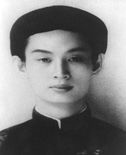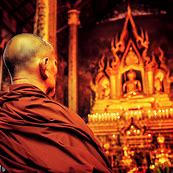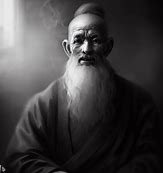PHẬT GIÁO HÒA HẢO
HARMONY BUDDHISM
1) Hạng xuất-gia,
2) Hạng tại-gia.
HẠNG XUẤT-GIA: Gồm có các nhà sư hay những ni-cô đã hoàn toàn ly khai với gia đình, quê hương, bè bạn, dựa thân vào cửa Thiền hoặc núi non am cốc, hằng ngày chỉ chuyên lo kinh kệ, săn sóc cảnh dà lam, trau luyện đức lành, giồi mài trí tuệ hầu giảng giải cho bá tánh, thập phương nghe để quày đầu hướng thiện quy y Phật Pháp, không còn thiết đến việc đời. Gia đình nhà cửa của nhà sư là cả thế gian, thân quyến nhà sư là khắp cả nhân loại đại đồng.
Đó là hạng người dốc tu cho mau thành Phật quả, thoát kiếp luân hồi.
HẠNG TẠI-GIA: Gồm tất cả đại-chúng, tất cả thiện nam tín-nữ chưa đủ những điều kiện xuất gia, vì cảm thấy mình còn nặng nợ với non sông tổ quốc, với gia đình, với đồng bào xã hội, nên chưa thể làm như các nhà sư hay ni cô đặng. Tuy vậy, họ cũng sẵn-sàng hoan nghinh ca-tụng lý-tưởng từ-bi bác ái đại-đồng của nhà Phật và Luật Nhân Quả do Phật thuyết ra. Thế nên ở tại nhà, họ phượng thờ Đức Phật, phát-nguyện quy-y, giữ gìn ít điều giới luật, hằng coi Kinh sách, sửa tánh, răn lòng, ủng-hộ các sư. Như thế, họ cũng lần lần lên con đường giải thoát. Đây là hạng người học Phật tu Nhân.
Bàn xét như trên, thấy rằng toàn thể trong Đạo chúng ta thuộc hạng tại gia cư-sĩ, học Phật tu Nhân vậy.
Sách xưa có câu: “Thiên kinh vạn điển hiếu nghĩa vi tiên” (muôn vạn quyển kinh của Phật Thánh Tiên đều dạy sự hiếu-nghĩa làm đầu). Hôm nay, đã quy y đầu Phật tu-niệm tại gia, ta hãy cố gắng vưng lời Thầy, Tổ đã dạy, lo tròn câu hiếu nghĩa.
Đạo Phật từ xưa đến nay luôn luôn phân làm hai hạng người :
Since its inception, Buddhism has ever distinguished into two categories of practicer:
1 Monastics,
2 Lay Practicer.
MONASTICS: The monks or nuns who have entirely severed ties with their families, native land, friends take shelter at monasteries, or hermitages on mountains, daily dedicated to sutra learning, caring for meditation sites, devoted to cultivating virtues and insight, to explain for the masses to repent and take refuge in Buddha and Dharma, no longer to be worldly. Their families and properties appertain to the world. Their relatives are the whole of humanity.
They endeavor to achieve Buddhahood and escape from their cycle of rebirth.
LAY PRACTICER: They include all the masses, male and female adherents who are not eligible to leave home and who feel still heavily indebted to their country and families, to their compatriots, and to society; therefore, they are unable to live like monastics. However, they uphold the Buddhist doctrine of compassion, cosmopolitanism, and the Buddhist law of causality. Thus, even at home, they worship Buddha, vow to take refuge, keep a few precepts, read sutras, improve their behavior, and support the monastics. Thus, they also progress toward deliverance. That is the category of "Practicer of Humanistic Buddhism."
In light of the above, all our Faith followers are called Practicers of "Humanistic Buddhism."
Classics said: "In myriad scriptures, filial piety and righteousness prevail."(In sutras in their millions filial piety and righteousness come first). Today, having taken refuge in Buddha as home practicer, obey Patriarch and Master to accomplish filiality and righteousness.









